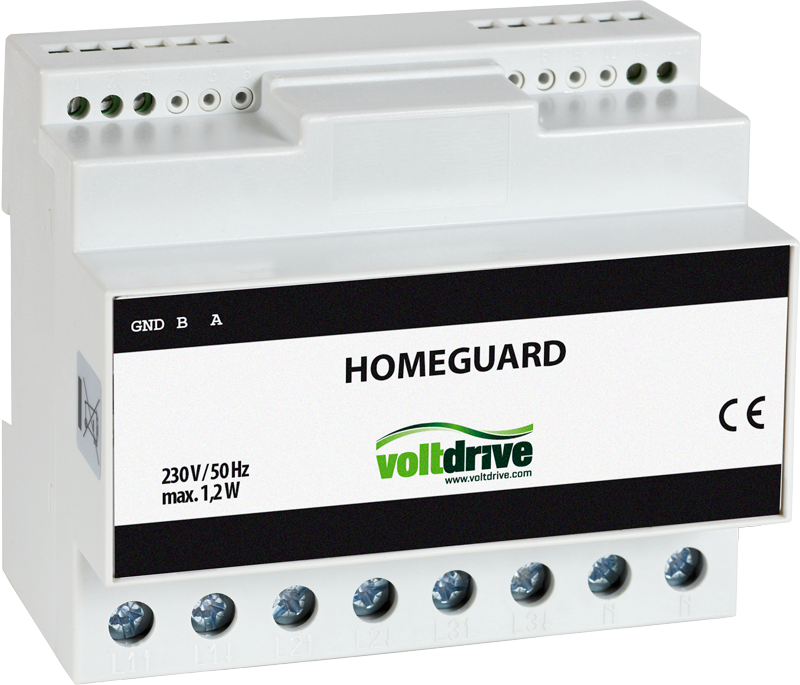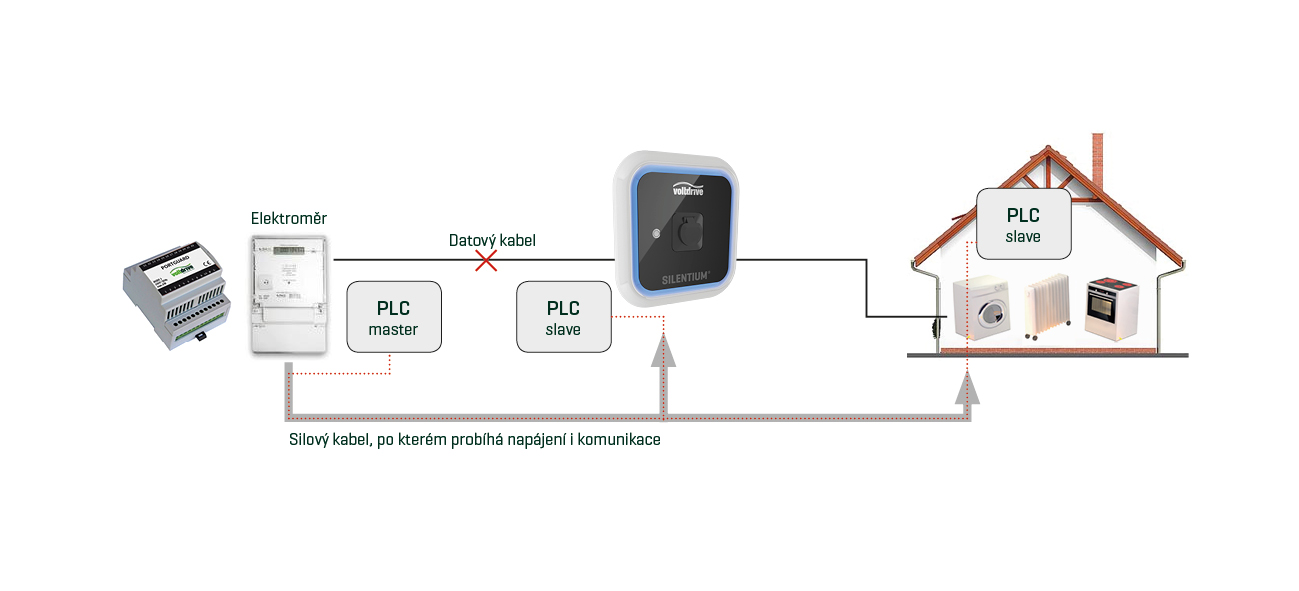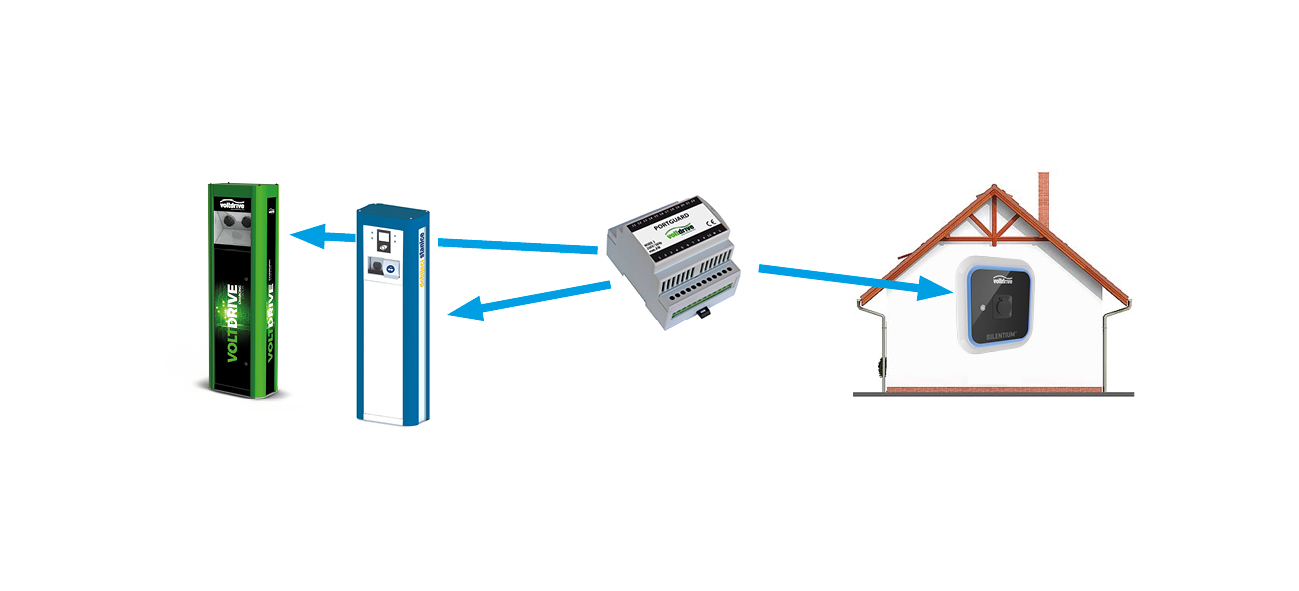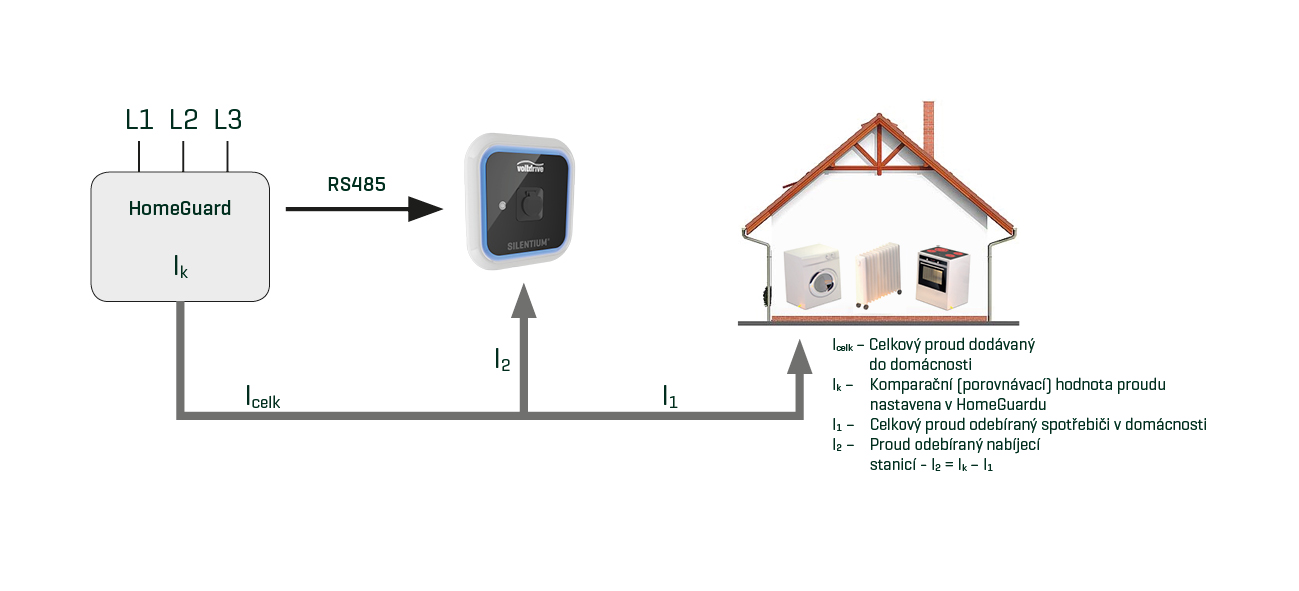Components

VoltGuard system components provide dynamic load management i.e. ensure trouble-free and clever electric current consumption at home while charging your electric vehicle with a charging station. They are designed to be connected directly to an electrical network protecting your home from a power outage caused by higher electric current consumption than the set limit. The intelligent communication also ensures distribution of information about the current tariffs of any appliances in your home.
ShiftGuard Communication Module
ShiftGuard module is a communication component primarily designed for power cable transmission of signals (Power Line Communication) within the electric vehicle charging infrastructure.
ShiftGuard PLC Modem is used to transfer information from HomeGuard Residual Capacity Meter of electrical connection for electric vehicle charging stations. It enables PortGuard Charging Control Unit to set the charging current exactly according to the electric current available at the point of supply (at the distribution meter).
.
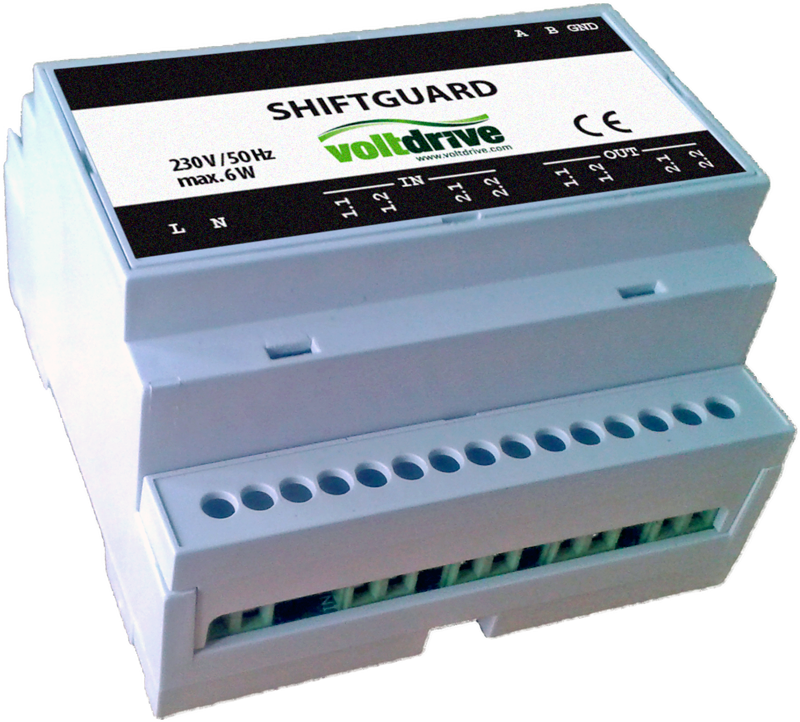
PortGuard Communication Module
PortGuard Charging Control Unit is used to set the required charging station parameters, to indicate the charging station status and to check the service and additional devices for safe charging of electric vehicles. This module is installed in electric vehicle charging stations.
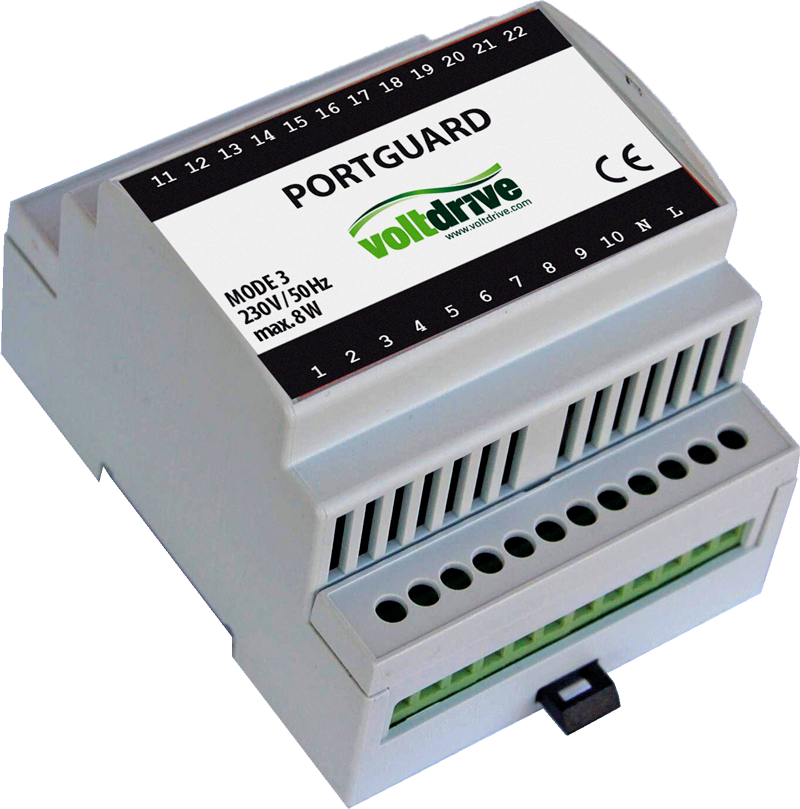
HomeGuard Residual Capacity Meter
HomeGuard Residual Capacity Meter is a device primarily used to regulate the charging current of electric vehicle charging stations.
The main function of HomeGuard Meter is to measure the flow of electric current with sufficient precision and to compare this current with the set limit in real time. The principle is to provide the control unit with the information on residual current (power). The control unit then sets the maximum possible charging current of an electric vehicle. This ensures that the maximum current of the charging station never exceeds the currently available current and the main circuit breaker does not turn off.
The goal is to charge electric vehicles with the maximum available current without affecting ordinary household operation.
